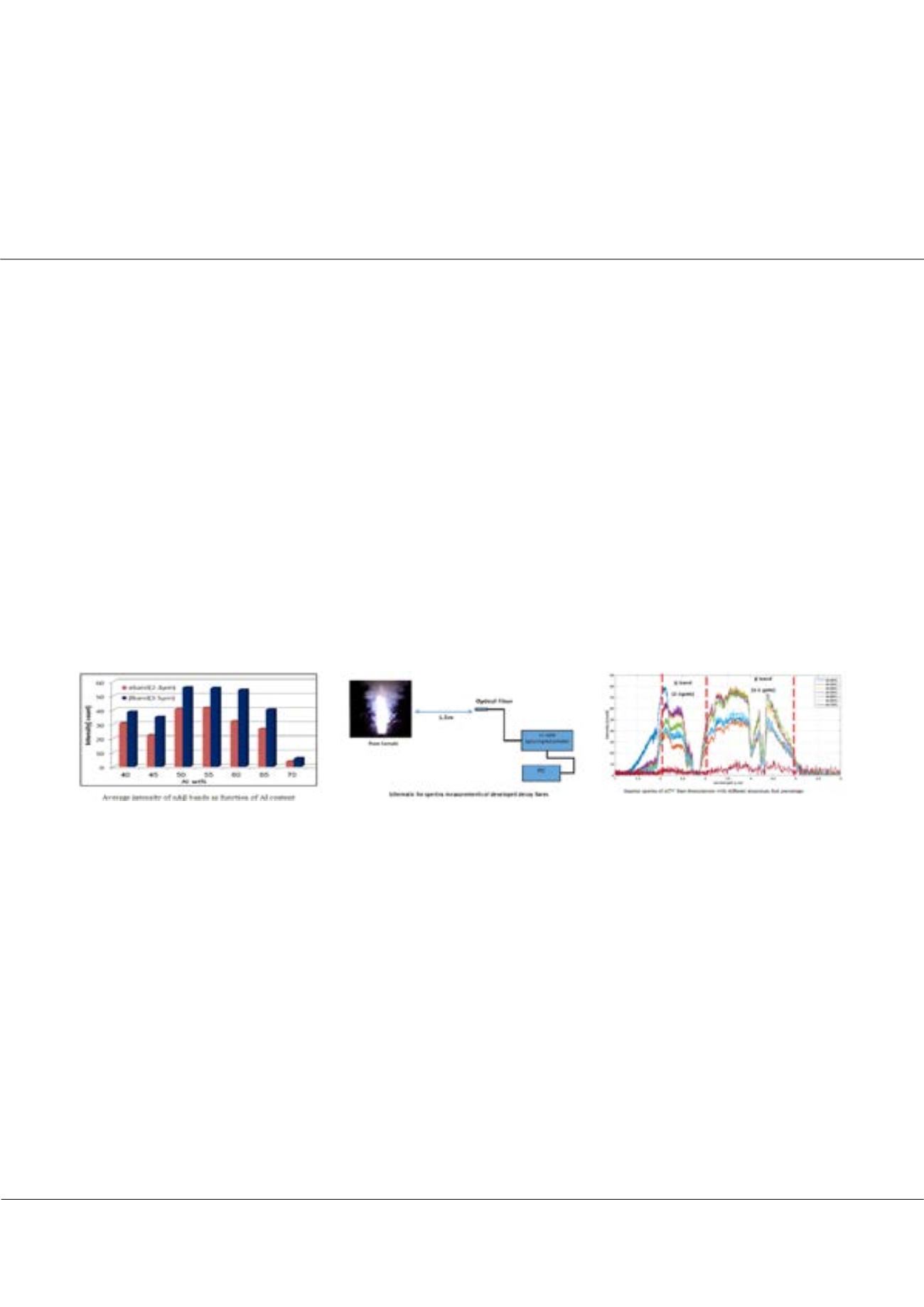

Page 108
conferenceseries
.com
Volume 6
Research & Reviews: Journal of Material Sciences
ISSN: 2321-6212
Advanced Materials 2018
September 04-06, 2018
September 04-06, 2018 | Zürich, Switzerland
21
st
International Conference on
Advanced Materials & Nanotechnology
Infrared spectra of aluminum fluorocarbon polymer compositions to thermal signature of jet engine
Amir Elsaidy
Military Technical College, Egypt
D
ecoy flares are energetic materials, which are capable of yielding thermal signature to interfere with IR guided missile seekers.
The flare thermal signature depends on the duration and intensity of the exothermal reaction and on the chemical nature of the
combustion products. Aluminum is the preferred metallic fuel for different pyrotechnic compositions because of its high stability
and (high heat source), while magnesium runs in the second place due to lack of its stability. Aluminum is widely employed in
wide applications particularly thermite compositions and flare compositions. In this study, different decoy flare formulations based
on aluminum/Teflon/Viton (ATV) (with fuel percentage ranging from 40:70 wt %) were prepared by granulation and subsequent
pressing. The spectral performance of developed decoy flare formulations were measured to the thermal signature of jet engine
nozzle using (FT-MIR 2-6 µm) spectrophotometer. The thermal signature of jet engine was characterized with two characteristic
peaks over α band (2-3 µm) and β band (3-5 µm); this thermal signature was correlated to black body emission by the nozzle at
690°C. The characteristic intensity ratio
Ɵ
=I
α
/I
β
=0.3. The developed decoy flares offered similar thermal signature but with higher
intensity due to the formation of carbon soot and AlF as nearly ideal emitter and active IR emitter respectively. Quantification of
these emitting species and combustion temperature was conducted using the ICT thermodynamic code. ATV decoy flare with
50wt % Al offered an increase in the intensity of α band and β by 6 and 1.5 times respectively. The main IR emitting species in this
formulation is (AlF) in the combustion flame. The characteristic intensity ratio
Ɵ
was found to be 0.73. This manuscript would open
the route for the development of customized decoy flares with tailored spectral performance.
Recent Publications
1. E C Koch, VWeiser, E Roth, and S Knapp (2012) Metal Fluorocarbon Pyrolants. XIII: High Performance Infrared Decoy
Flare Compositions Based onMgB
2
andMg
2
Si and Polytetrafluoroethylene/Viton®. Propellants, Explosives, Pyrotechnics
37(4):432-438.
2. C D Yarrington, S F Son and T J Foley (2010) Combustion of silicon/teflon/viton and aluminum/teflon/viton energetic
composites. Journal of Propulsion and Power 26(4):734-743.
3. DTOsborne (2006)The effects of fuel particle size on the reaction of Al/Teflonmixtures. Texas Tech University Libraries.
4. R W Conner and D D Dlott (2012) Comparing boron and aluminum nanoparticle combustion in Teflon using ultrafast
emission spectroscopy. The Journal of Physical Chemistry C 116(4):2751-2760.
5. S Yoo, D S Stewart, S Choi, D Lambert, M L Elert, W T Buttler, et al. (2012) Modeling kinetics for the reaction of
aluminum and teflon and the simulation of its energetic flow motion. AIP Conference Proceedings, 1426(1):351-354.
Biography
Amir Elsaidy has completed his Graduation in Chemical Engineering at Military Technical College, Egypt. He has experience in preparations and developments in the
field of Chemical Engineering and Energetic Materials by creating new pathways for improvements and; his interest is focused on “Preparation and spectral performance
evaluation of these materials”. These materials were developed by granulation and subsequent pressing and their spectral performance was conducted.
amiralsaidy0@gmail.comAmir Elsaidy, Res. Rev. J Mat. Sci. 2018, Volume 6
DOI: 10.4172/2321-6212-C3-020
















